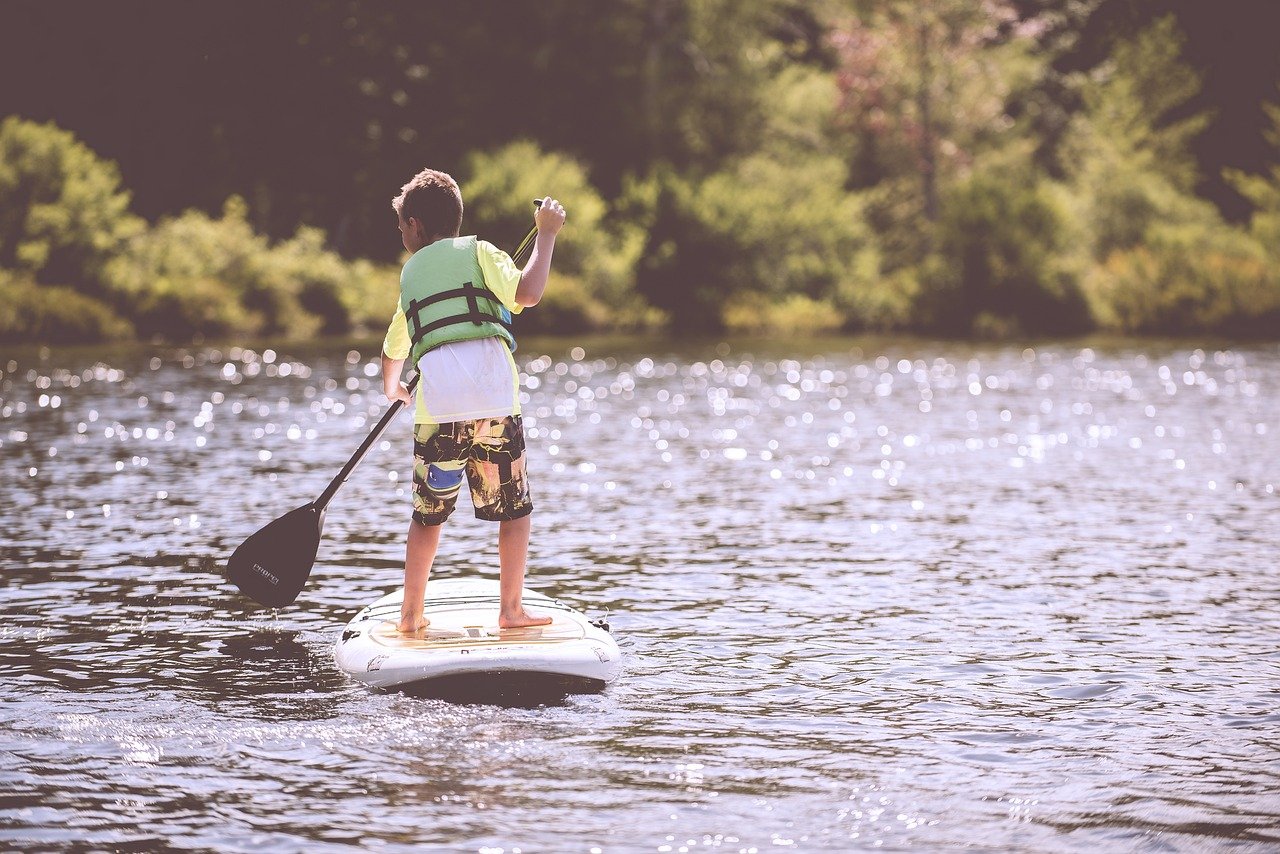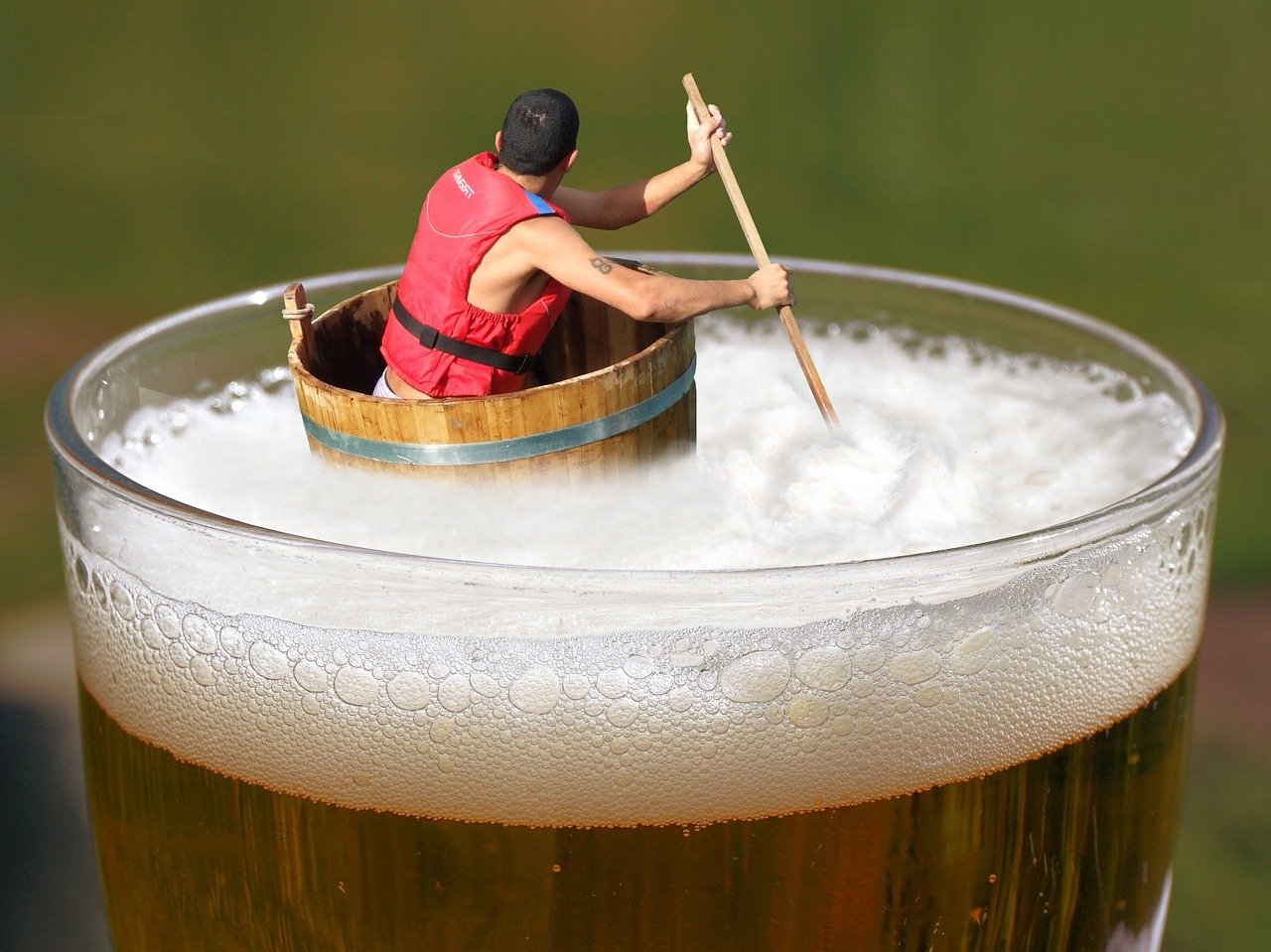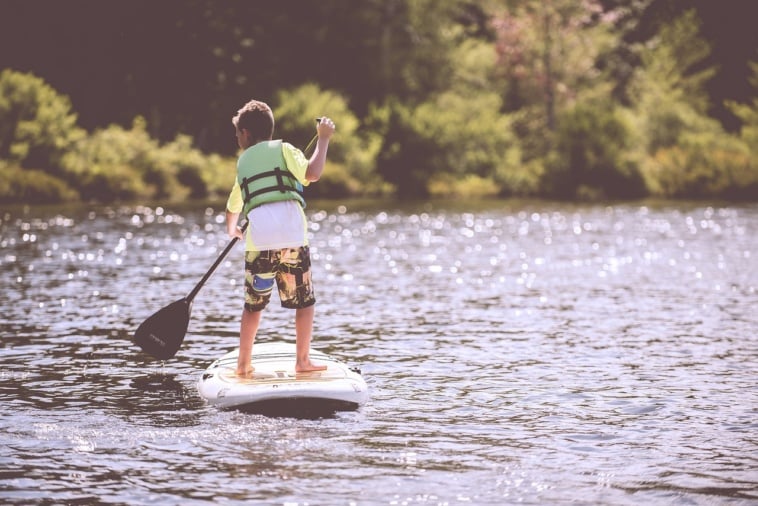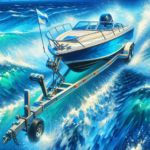When you’re out on the water, enjoying a leisurely day on a pontoon boat, safety should always be a top priority. As you embark on your boating adventure, you may wonder if pontoon boats come equipped with life jackets. Rest assured, dear reader, that the answer to this question is at your fingertips.
The Importance of Life Jackets
The purpose of life jackets
Life jackets, also known as personal flotation devices (PFDs), are crucial safety equipment that should be worn by everyone on board a pontoon boat. Their primary purpose is to keep individuals afloat in case of accidental falls, capsizing, or any other water-related emergencies. Life jackets are designed to provide buoyancy and keep you upright in the water, ensuring your safety until help arrives. Without a life jacket, the risk of drowning becomes significantly higher, even for skilled swimmers. Therefore, it is essential to understand the significance of wearing a life jacket while enjoying your pontoon boat adventures.
Legal requirements for life jackets on boats
To enhance safety on the water, there are legal requirements dictating the use and availability of life jackets on pontoon boats. The United States Coast Guard (USCG) mandates that every vessel, including pontoon boats, must have a sufficient number of properly fitting and Coast Guard-approved life jackets on board. The specific regulations consider factors such as boat length, number of passengers, and age of the individuals.
These regulations exist to ensure the safety of everyone on board and to minimize the risk of accident-related injuries or fatalities. It is important to familiarize yourself with the legal requirements regarding life jackets to avoid any potential legal complications and to prioritize your safety and the safety of your guests.
Safety benefits of wearing life jackets
Wearing a life jacket can greatly enhance your safety while enjoying your time on a pontoon boat. Life jackets provide several crucial safety benefits, including:
-
Buoyancy: Life jackets are designed to keep you afloat, allowing you to conserve energy, stay above water, and wait for help in case of an emergency.
-
Confidence for non-swimmers: For individuals who are not proficient swimmers, life jackets provide a sense of security, enabling them to participate in water activities with peace of mind.
-
Preventing panic: In case of unexpected falls or accidents, a life jacket can prevent panic and disorientation, allowing you to stay calm and focused on ensuring your safety.
-
Protection from hypothermia: In cold water, life jackets help insulate your body, reducing the risk of hypothermia while waiting for rescue.
-
Easy identification: Brightly colored life jackets make it easier for rescuers to locate and identify individuals in the water, improving response time in emergency situations.
By wearing a life jacket, you not only increase your personal safety but also set a positive example for others on board. It is crucial to understand the importance of wearing a life jacket and to prioritize safety above all else when boating.
Pontoon Boats and Safety Regulations
Understanding pontoon boats
Before delving into safety regulations specific to pontoon boats, it is important to have a basic understanding of what pontoon boats are. A pontoon boat is a flat-decked vessel supported by pontoons, which are cylindrical structures filled with air or any other buoyant material. They provide stability and allow the boat to glide smoothly over water, making pontoon boats a popular choice for leisure boating and recreational activities.
Pontoon boats offer ample space and comfort, making them ideal for family outings, fishing trips, and social gatherings on the water. However, it is crucial to adhere to safety regulations to ensure the well-being of everyone on board.
Safety regulations for pontoon boats
When operating a pontoon boat, it is essential to comply with safety regulations to minimize the risk of accidents and injuries. While specific regulations may vary depending on your location, there are general safety guidelines applicable to pontoon boats that ensure safe boating experiences. Some key safety regulations for pontoon boats include:
-
Capacity limits: Pontoon boats have weight capacity limits determined by the manufacturer. It is crucial to adhere to these limits to maintain stability and prevent overloading, which can lead to accidents.
-
Navigation lights: Pontoon boats, like any other vessel, must have properly functioning navigation lights. These lights ensure visibility at night and in low light conditions, reducing the risk of collisions.
-
Fire extinguishers: Pontoon boats equipped with fuel systems or enclosed compartments are required to carry appropriate fire extinguishers. In the event of a fire, having a working fire extinguisher onboard can prevent accidents from escalating.
-
Carbon monoxide detection: Carbon monoxide (CO) is an odorless and potentially lethal gas that can accumulate in enclosed spaces, such as pontoon boats. Installing carbon monoxide detectors can alert occupants to the presence of dangerous levels of CO, minimizing the risk of poisoning.
-
Adequate ventilation: Proper ventilation is crucial on pontoon boats with enclosed compartments or fuel systems. Ventilation systems help dissipate potentially hazardous vapors and maintain healthy air quality.
Complying with these safety regulations ensures a safe and enjoyable experience on your pontoon boat. Familiarize yourself with the regulations specific to your location and follow them diligently for a worry-free boating experience.

Providing Safety Equipment
Responsibility of boat owners
As a pontoon boat owner, it is your responsibility to provide and maintain appropriate safety equipment on board. This includes ensuring that you have a sufficient number of life jackets available for all passengers, as mandated by the relevant regulations. In addition to life jackets, there are several other safety equipment items that should be readily accessible on your pontoon boat.
Common safety equipment onboard
Apart from life jackets, there are a few essential safety equipment items that every pontoon boat should have. These include:
-
Throwables: A throwable device, such as a ring buoy or a horseshoe buoy, is a vital safety equipment item for emergencies. It can be thrown to a person in distress to provide additional floatation and help them stay afloat until help arrives.
-
Fire extinguishers: In addition to the individual fire extinguishers required by regulations, it is a good practice to have additional fire extinguishers easily accessible in high-risk areas such as the engine compartment or the galley.
-
First aid kit: Keeping a well-stocked first aid kit onboard can be lifesaving in case of minor injuries or accidents. Ensure that it contains basic supplies such as bandages, antiseptic solutions, pain relievers, and adhesive tape.
-
Anchoring equipment: Good anchoring equipment, including an anchor, chain, and rope, is essential for safely mooring your pontoon boat. It provides stability and prevents drifting, especially in adverse weather conditions.
Securing proper life jackets on pontoon boats
When it comes to life jackets, it is crucial to ensure that you have the appropriate type and size for your passengers. Different types of life jackets cater to specific activities, such as watersports or offshore boating. Make sure you have a combination of sizes to accommodate individuals of all ages and sizes.
Properly securing life jackets is equally important. Storing them in easily accessible locations and clearly marking their positions helps ensure that they can be found quickly in case of an emergency. Installing life jacket storage compartments or racks provides a designated space for each life jacket, eliminating confusion and ensuring a hassle-free experience for everyone on board.
Types of Life Jackets
Different types of life jackets
Life jackets come in various types, each designed to serve different purposes and provide varying levels of buoyancy. Understanding the different types can help you choose the most suitable life jacket for pontoon boating. Here are the most common types:
-
Type I: Offshore Life Jackets – These life jackets offer the highest buoyancy and are suitable for use in remote or rough waters. They are designed to turn an unconscious person in the water face-up, ensuring maximum safety.
-
Type II: Near-Shore Buoyant Vests – These life jackets are commonly used in calm waters or where there is a high chance of quick rescue. They provide good buoyancy and are comfortable to wear.
-
Type III: Flotation Aids – Flotation aids are typically worn by individuals engaged in water sports activities. These jackets allow freedom of movement and are suitable for conscious adults and older children in calm waters.
-
Type IV: Throwable Devices – Throwable devices, such as buoyant cushions or rings, are not worn but are thrown to a person in distress to provide additional floatation.
-
Type V: Special-Use Devices – Special-use devices include hybrid inflatable life jackets and work vests. They are designed for specific activities and may require manual activation in case of an emergency.
Choosing the right life jacket for pontoon boating
When selecting life jackets for pontoon boating, consider the activities you and your guests will engage in and the water conditions you will encounter. If you plan on participating in water sports, such as tubing or wakeboarding, opt for Type III flotation aids that offer mobility and comfort. If venturing into offshore waters or remote locations, it is advisable to have Type I offshore life jackets readily available.
Remember to choose life jackets that are approved by the Coast Guard to ensure their quality and compliance with safety standards. Properly fitting life jackets are crucial for their functionality, so ensure they fit snugly without restricting movement yet allow easy adjustment. Finally, periodically check your life jackets for any signs of wear and tear, and replace them as needed to ensure their proper functioning in case of an emergency.

Legal Requirements for Life Jackets on Pontoon Boats
Applicable laws and regulations
Just like any other boat, pontoon boats are subject to laws and regulations governing the use and availability of life jackets. These legal requirements vary depending on your jurisdiction, but generally, they are designed to promote boating safety and reduce the risk of accidents. Familiarizing yourself with the applicable laws will ensure you comply with all necessary requirements and avoid legal consequences.
Specific requirements for life jackets on pontoon boats
When it comes to pontoon boats, there are specific requirements related to life jackets that you must adhere to. These requirements often take into account factors such as the size of the boat, the number of passengers it can carry, and the age of the passengers. For example, in many jurisdictions, children under a certain age are required to wear a life jacket at all times while on a pontoon boat.
Additionally, pontoon boats over a certain length may have additional requirements, such as having a certain number of life jackets readily accessible for all passengers. It is important to consult the specific regulations in your area to ensure that you meet all the legal requirements regarding life jackets on your pontoon boat.
By complying with the legal requirements for life jackets, you not only prioritize safety but also prevent any potential legal consequences that may arise from non-compliance. Always stay informed about the regulations specific to your jurisdiction and update your safety equipment accordingly.
Boat Dealers and Life Jackets
Do pontoon boat dealers include life jackets?
In some cases, pontoon boat dealers may include life jackets as part of the purchase package. However, this is not always the case, and it is essential to clarify the details with your dealer before making any assumptions. The inclusion of life jackets may depend on the dealer and the specific package or promotion being offered at the time of purchase.
Common practices of boat dealers regarding life jacket provision
While the provision of life jackets may vary by dealer, it is common for boat dealers to offer life jackets as additional accessories for purchase. Boat dealers often have a range of life jackets available, allowing buyers to select the appropriate type and size for their specific needs. They may also provide expert advice on choosing the right life jackets based on the intended use of the pontoon boat.
Boat dealers play a crucial role in ensuring customers are aware of the importance of life jackets and facilitate access to this essential safety equipment. Even if life jackets are not included with the purchase, dealers can guide buyers in making informed decisions and provide options that comply with the legal requirements and safety standards.
If purchasing a pontoon boat from a dealer, it is advisable to inquire about the availability of life jackets, any relevant promotions, and any additional safety equipment or accessories that may be offered. Remember to prioritize your safety and the safety of your passengers by ensuring the availability of properly fitting and Coast Guard-approved life jackets on your pontoon boat.

Boat Rentals and Life Jackets
Are life jackets provided in boat rentals?
In most cases, life jackets are provided in boat rentals to ensure the safety of renters. Boat rental companies understand the importance of life jackets and typically include a sufficient supply of life jackets for all passengers as part of the rental package. However, it is always recommended to confirm this with the boat rental company before making a reservation.
Renting pontoon boats and life jacket options
When renting a pontoon boat, you can expect the rental company to provide life jackets for all occupants. It is important to verify the quality and condition of the life jackets before embarking on your boating adventure. Ensure that the life jackets are properly fitted and suitable for the age and size of each individual.
If you have specific preferences or requirements, it is advisable to communicate them to the boat rental company ahead of time. This way, they can ensure the availability of the right type and size of life jackets for you and your guests. Remember, safety should always be the top priority, and renting a pontoon boat equipped with proper life jackets will contribute to a worry-free and enjoyable experience on the water.
Ensuring Safety on Pontoon Boats
The responsibility of boat operators
As the boat operator, it is your responsibility to ensure the safety of everyone on board the pontoon boat. This includes adhering to safety regulations, providing essential safety equipment, and enforcing proper safety practices. By taking on this responsibility, you create a safe and enjoyable environment for everyone.
Importance of educating passengers about life jackets
One of the key responsibilities of the boat operator is to educate passengers about the importance of wearing life jackets and how to properly use them. Many individuals may not be aware of the potential risks or may underestimate the need for a life jacket. By providing information and emphasizing the critical role life jackets play in ensuring safety, you can encourage proper usage and enhance the overall safety awareness of your passengers.
Enforcing life jacket usage on pontoon boats
Once you have educated your passengers about the importance of wearing life jackets, it is crucial to enforce their usage on your pontoon boat. Ensure that everyone on board is wearing a properly fitted life jacket before departing from the dock, and remind individuals to keep their life jackets on throughout the boating trip.
Enforcing life jacket usage may involve setting a strict policy that everyone must comply with. By making it a non-negotiable rule, you prioritize the safety of all individuals on board and minimize the risk of accidents or injuries. Regular checks and reminders throughout the boating trip help maintain compliance and ensure the continual safety of everyone.
Additional Safety Measures
Other safety equipment to consider
While life jackets are of utmost importance, there are additional safety equipment items that can further enhance the safety measures on your pontoon boat. Consider these additional safety equipment options to ensure a comprehensive and secure boating experience:
-
Emergency signaling devices: Flares, distress flags, and whistles are essential emergency signaling devices that can help attract attention and summon assistance in case of distress.
-
Navigational aids: GPS systems, radar, and charts are crucial for safe navigation, especially in unfamiliar waters. These aids provide valuable information about your surroundings and can prevent collisions or grounding.
-
Boat hooks and poles: Boat hooks and poles are versatile tools that can assist in docking, retrieving objects, or fending off other vessels in close quarters.
-
Bilge pumps: Bilge pumps are crucial for removing excess water from the hull of the pontoon boat. Regularly checking the functioning of bilge pumps can help prevent potential flooding and maintain a dry and safe environment.
Importance of having proper safety measures onboard
Having proper safety measures onboard your pontoon boat not only aids in emergency situations but also promotes overall safety during normal boating activities. Safety equipment such as emergency signaling devices and navigational aids contribute to a well-prepared and safe boating experience. By considering and equipping your pontoon boat with these additional safety measures, you demonstrate a commitment to the well-being of everyone on board and exemplify responsible boating practices.
Joining Boating Associations
Benefits of joining boating associations
Joining boating associations offers numerous benefits and resources for pontoon boat owners, including enhanced safety knowledge and access to valuable boating-related information. Boating associations bring together boating enthusiasts, industry professionals, and regulatory bodies to promote safety, education, and community among boaters. By becoming a member, you can tap into a variety of resources designed to enhance your boating experiences and keep you informed about the latest boating safety practices.
Resources provided by boating associations
Boating associations provide a wealth of resources and information to their members to help them navigate the world of boating safely. These resources may include:
-
Safety education programs: Boating associations often offer safety education programs, seminars, or workshops to increase boaters’ knowledge and skills. These programs cover a wide range of topics, including life jacket usage, emergency procedures, and navigation.
-
Safety equipment discounts: Some boating associations negotiate special discounts or offers on safety equipment and accessories for their members. This provides an opportunity to obtain quality safety gear at a discounted price, further ensuring the safety of everyone on board.
-
Legislative updates: Boating associations monitor and share updates on regulations and legal requirements to keep members informed and help them navigate the ever-changing landscape of boating laws.
-
Networking and support: Being part of a boating association allows you to connect with fellow boaters, share experiences, and seek advice. The community aspect of boating associations provides a support system and a platform for learning from the experiences of others.
Joining a boating association can be a valuable step towards enhancing your boating knowledge, accessing helpful resources, and fostering a sense of belonging within the boating community. Consider researching and joining a boating association in your area to take advantage of the benefits and opportunities they offer.
In conclusion, the importance of life jackets cannot be overstated when it comes to pontoon boating. They serve as the first line of defense in ensuring the safety of individuals on board. Understanding the purpose of life jackets, complying with legal requirements, and securing proper life jackets are crucial steps to maintain a safe and enjoyable boating experience. Additionally, considering other safety equipment, educating passengers, and joining boating associations are important measures that further enhance the safety of everyone on board. By prioritizing safety and adopting responsible boating practices, you contribute to a safer and more enjoyable boating environment for all.





